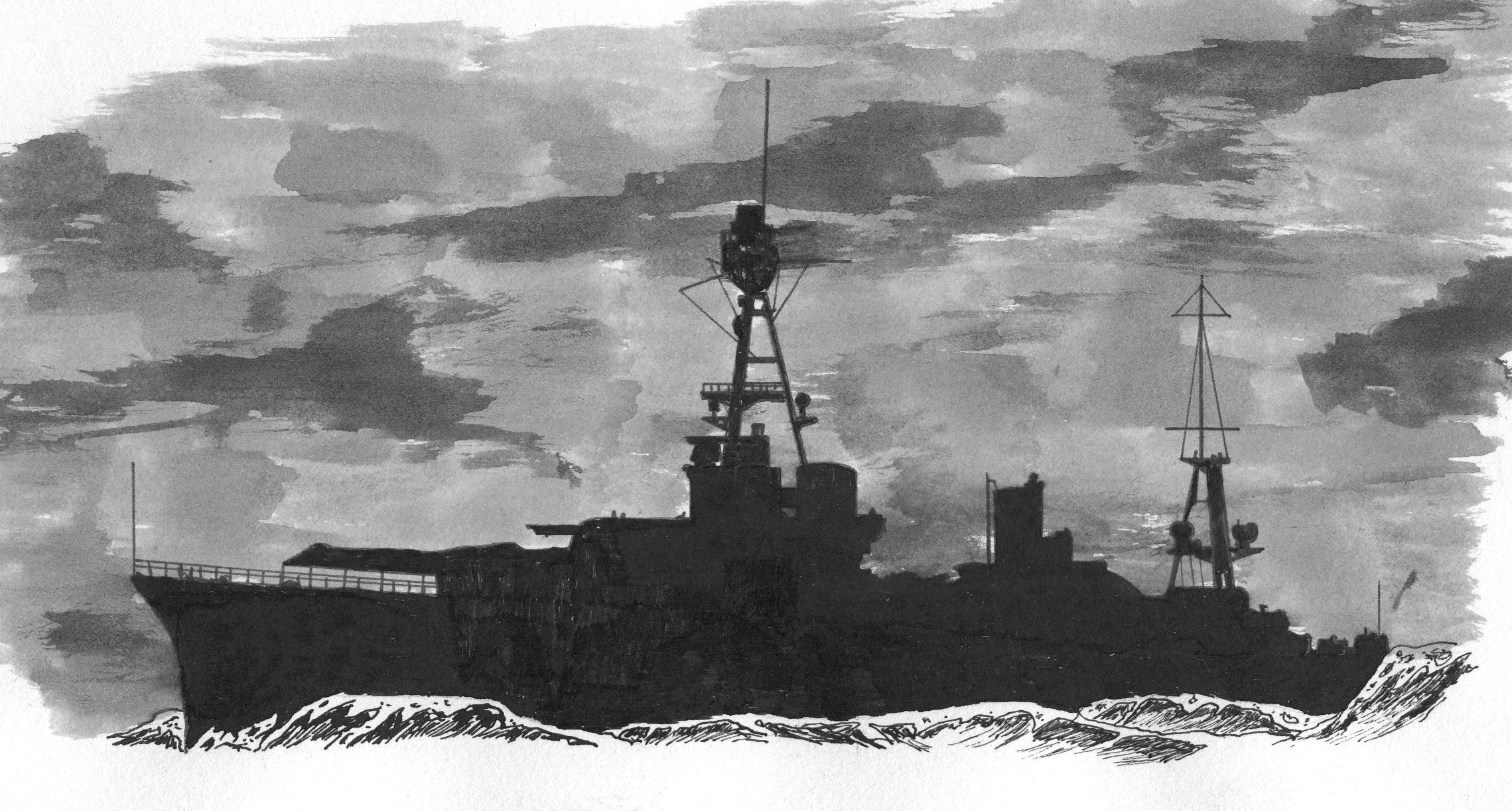Pensacola-class
Northampton-class
USS Houston
Building ordered on 18 December 1924, building awarded on 13 June 1927, laid down by Newport News Shipbuilding, Newport News, Virginia, USA on 1 May 1928, launched by Miss Elizabeth Holcombe on 7 September 1929, reclassified from CL-30 into CA-30 on 1 July 1931 and sunk in the Battle of Sunda Strait, Dutch East Indies against the Japanese navy on 1 March 1943. She had been part of the ABDA-combined striking force commanded by the Dutch rear admiral Karel Doorman. The major part of this force including the Dutch cruisers Hr. Ms. De Ruyter and Java were sunk in the Battle of the Java Sea on 27 February 1942, the Australian light cruiser HMS Perth sunk with her also on 1 March just like the British heavy cruiser HMS Exeter in the Java Sea. Contracted building costs 10.567.000 US dollars.
With a displacement of 9.200 (standard) tons and as dimensions 173 (between perpendiculars)-182,96 (over all) x 20,14 x 4,98 metres or 569-600.3 x 66.1 x 16.4 feet. The machinery consisted of 4-shaft Parsons turbines and 8 White-Forster boilers supplying via 4 screws 107.000 hp allowing a speed of 32,7 knots. Range with a speed of 15 knots and fuel oil bunker capacity of 1.400 tons was 10.000 nautical miles. Four boiler rooms. Heating surface 95.040 square feet. Weight machinery 2.161 tons. 4 Turbo generator sets each of 250kW 120-120Volt and made by General Electric Company. The crew numbered 785 men (included 109 officers). The armour consisted of a 2,5cm/1”- 9,5/3.75” thick belt and with the barbettes, gun houses and conning tower protected by respectively 3,8cm/1.5”, 1,9cm/0.75”-6,4cm/2.5” and 3,2cm/1.25”.
The armament consisted of 3x3-20,3cm/8” /55 cal guns, 4-12,7cm/5” /25 cal anti aircraft guns, 2-4,7cm/1.9”/3pd saluting guns, 6-53,3cm/21” torpedo tubes and since 1932 4 planes for which amidships 2 catapults were available. The armament in 1942 consisted of 3x3-20,3cm/8” /55 cal guns, 8-12,7cm/5” /25 cal anti aircraft guns, 6 x quad 4cm/1.6” Bofors guns, 20-2cm/0.79 Oerlikon guns, 2-4,7cm/1.9”/3pd saluting guns, 6-53,3cm/21” torpedo tubes.



